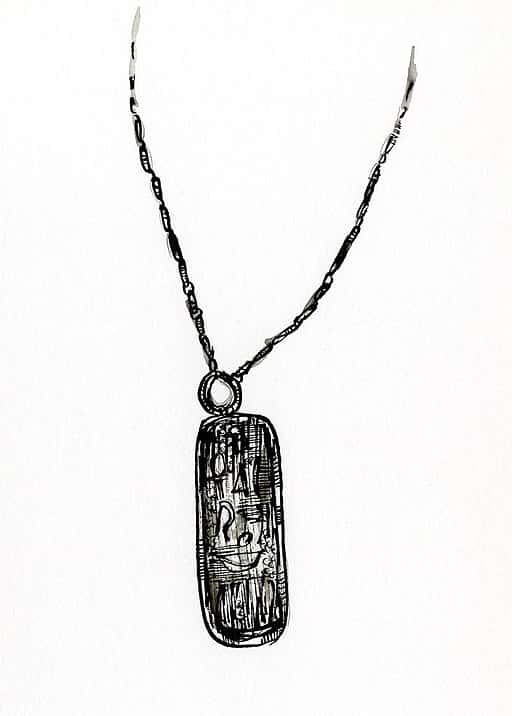Amulet History
Although today amulets are often referred to as pendants and vice versa, they are distinctly different items. The term amulet dates to the mid-15th century, describing items worn with the superstitious intent to ward off spells or disease. The name amulet can be applied to a range of items beyond pendants. Anything from coins, statues, or animal parts have been used as amulets in the past.
Defining an amulet, therefore, poses a bit of a challenge.
What Is an Amulet?
Amulets, also frequently called talismans, are objects which are believed to have supernatural abilities to protect the user and bring good fortune. These charms are usually worn or carried on one’s person in order to be effective. Some amulets are placed in key locations around one’s home in order to have effect.
The majority of gemstones are considered to be naturally-occurring amulets. Other materials that constitute natural amulets include animal teeth and claws, bones, plants, metals, and feathers. It is believed that these materials draw their powers from being of the natural world. Using these items in religious ceremonies allowed them to become imbued with significance, enhancing the belief in their supernatural abilities.
Amulets have been worn and used for millennia.
 MoMu - Fashion Museum Antwerp, CC0, via Wikimedia Commons
MoMu - Fashion Museum Antwerp, CC0, via Wikimedia Commons History of the Amulet
Amulets believed to depict Venus figurines have been found in Neanderthal and other prehistoric burials dated to roughly 25,000 BC. These could be the earliest examples of man-made amulets, showing their innate link to humanity and culture. In Ancient Egypt, many amulets were worn in life as well as death. The scarab beetle was among the most common Egyptian amulet. In this culture, scarabs represented the circle of life, and it was widely believed that the sun was pushed across the sky by an unseen scarab.
Medieval Christian cultures utilised amulets representing Christian iconography frequently. Images and letters associated with specific saints were worn to summon the support of the saint in question. The continued wearing of crosses, crucifixes, and representations of Jesus are examples of Christian amulet usage that have persevered throughout centuries.
While Christian amulets have been used throughout much of the last 2,000 years, the name is more commonly linked to pagan and folk religions. The concept of a lucky rabbit or hare’s foot, for example, is an amulet that is instantly recognizable today. This amulet is known for bringing good luck to the user, even today. The question of do people still use amulets is somewhat answered by the popularity of rabbit’s feet.
Both rabbit’s feet and hare’s feet are still widely available to purchase in many countries. The original purpose of carrying a rabbit’s foot amulet was to provide relief to poor health. These tokens are still used today without this original function. The vast majority of amulets in use today are used as good luck charms more so than tokens used to improve one’s health or financial status.
Amulets are rarely used as spiritual tokens today.
What Is a Spiritual Amulet?
Most amulets are in fact spiritual amulets, or at least they were at their inception. Amulets have existed alongside humanity for millennia. With little scientific understanding, amulets were perceived as possessing spiritual abilities. Some amulets are believed to be innately magical because of their appearance, such as gemstones. The spiritual power of other items is historically given through the way humans use them, such as bone and metals.
The term amulet can be used to describe many pendants featuring significant gemstones such diamonds and other precious stones. The term pendant, however, does not apply as a blanket statement to amulets. Whether their powers are to be believed or not, it is very human to apply significance to items in this way. For this reason, amulets continue to be worn today.



